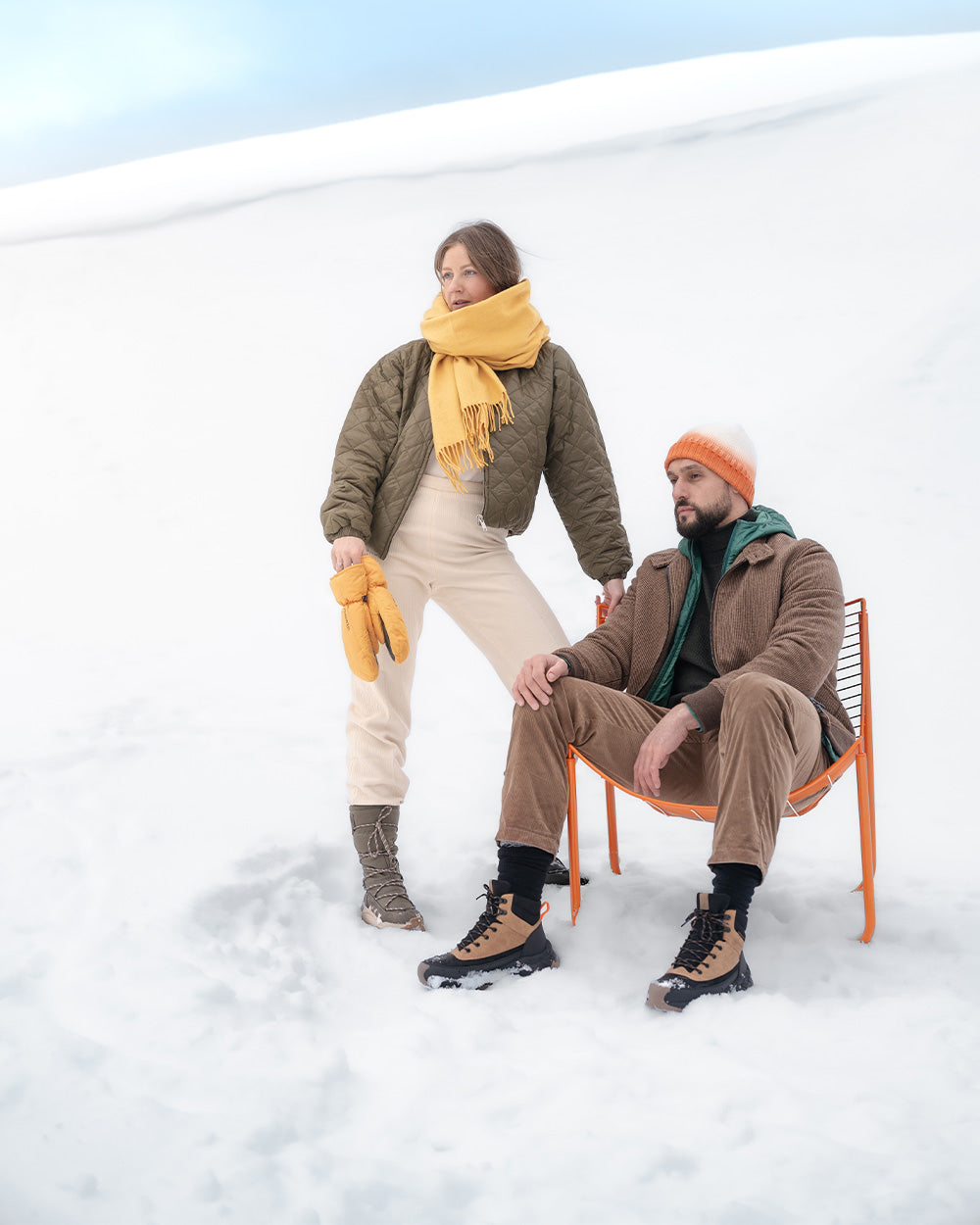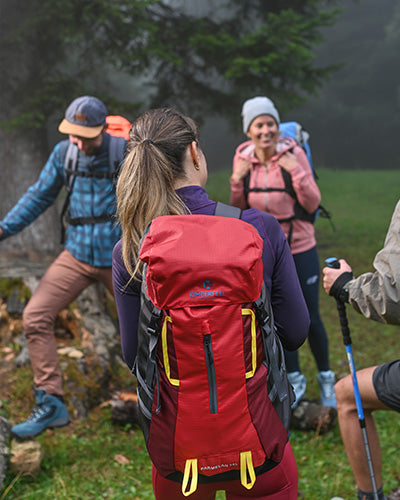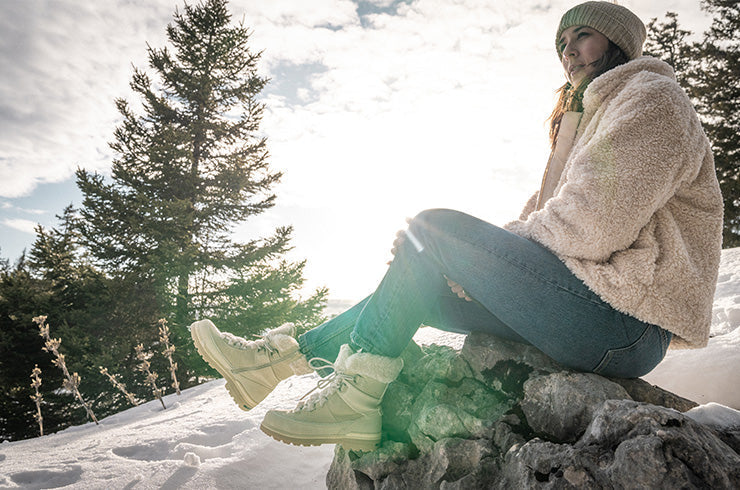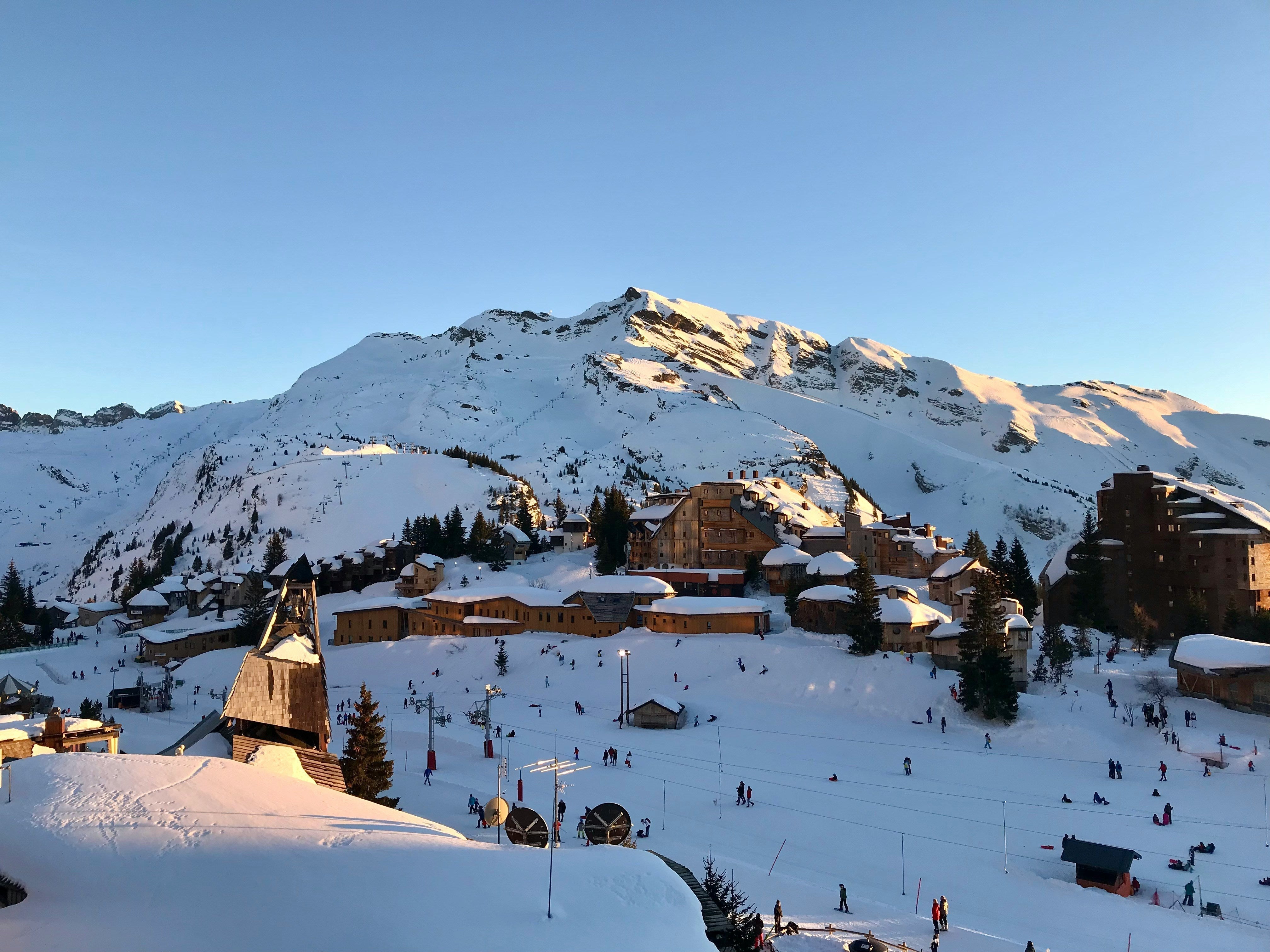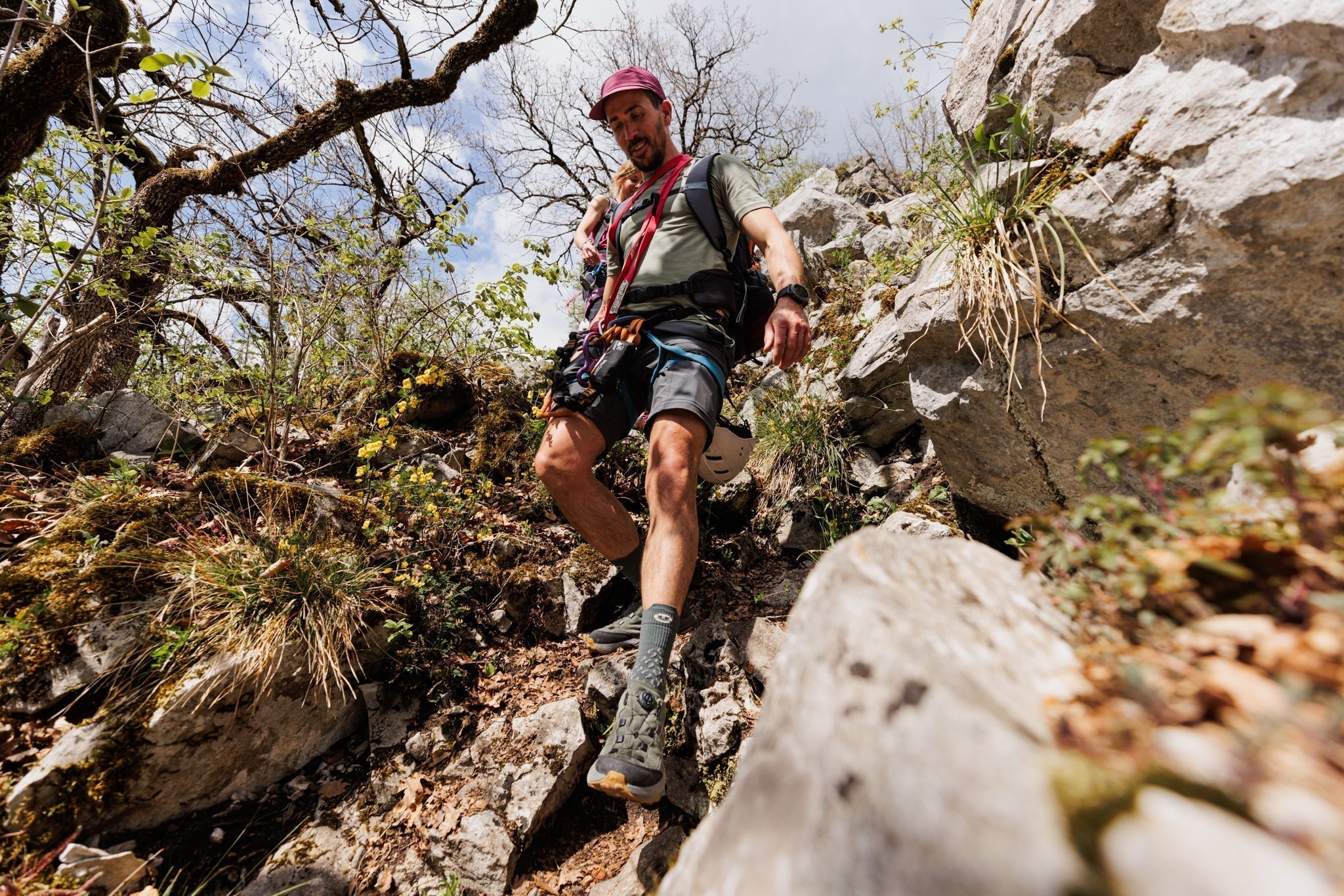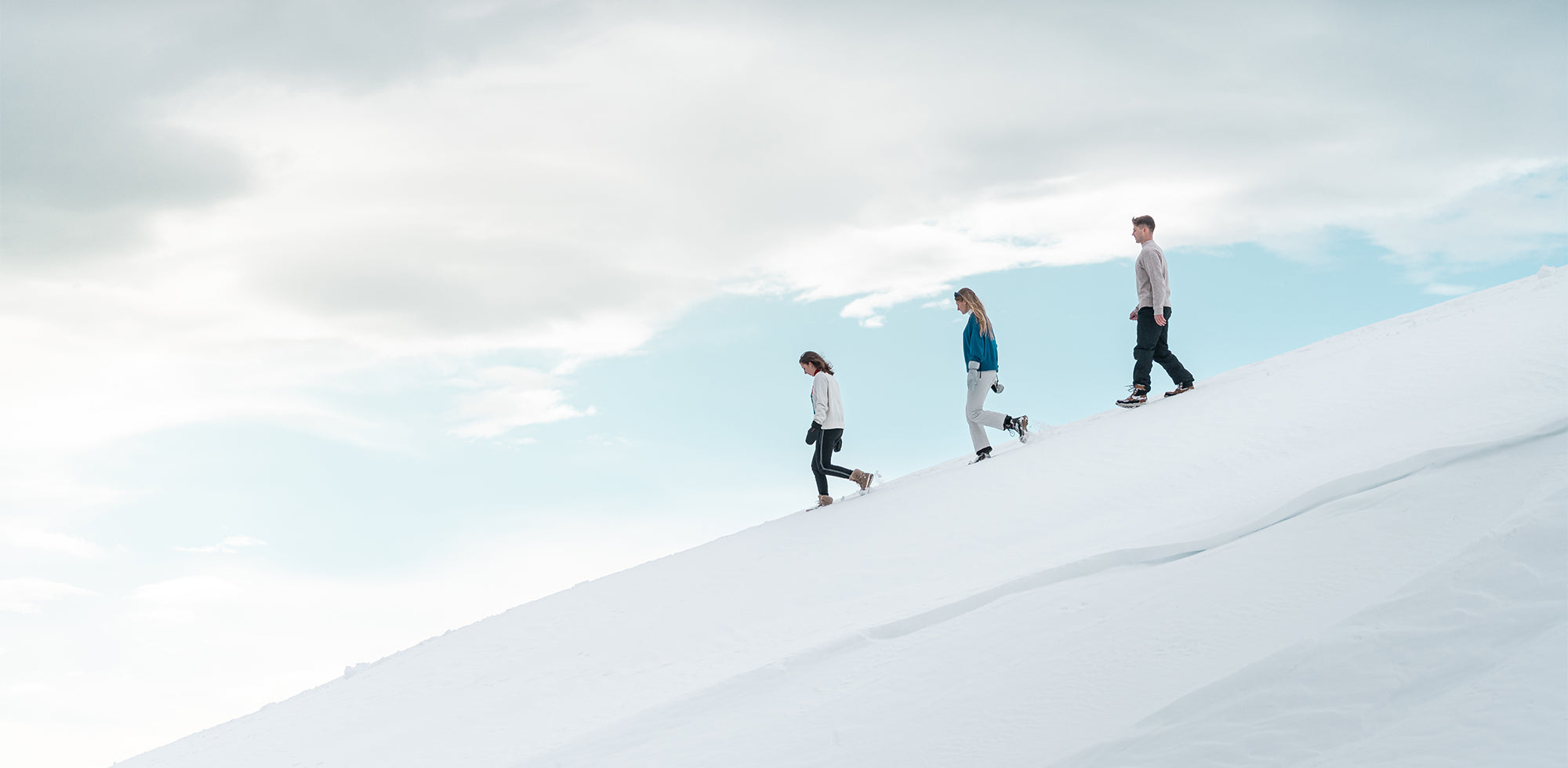The mountain cannot be improvised or tamed. Having the best experience as a hiker requires preparation.
Here are 11 tips for going hiking in the mountains with peace of mind!
1/ Prepare the itinerary
It is preferable to know the path before leaving (orientation, route, accessibility), as well as the approximate duration of the route and the altitude difference. This helps avoid setbacks, getting lost or lacking physical resources.
Sites and applications such as Visorando / Altituderando / Whympr / topoguide de la FFrandonnée, among others, allow you to have a fairly precise idea of the route and to prepare well.
Practical: the paths are often indicated via Google map, as well as your position.
2/ Prepare yourself mentally
Each hike is approached according to your own physical abilities. Carefully gauging the difficulty of the hike is important so as not to find yourself totally overwhelmed and out of breath.
Anticipating effort plays an important role. By understanding what awaits it, the body is better prepared to mobilize the necessary resources when the time comes. (That doesn't mean you won't sweat!)
3/ Be sure to check the weather
Whether it's hot weather or the risk of storms, we check the weather conditions before leaving and we agree to give up if necessary.
Storms and lightning are grounds for canceling the hike. Between poor visibility, landslides, falling trees and lightning strikes, it is better to postpone the adventure.
Too much heat can also be dangerous, the sun is strong in the mountains, particularly on the paths along the rock faces which radiate even more heat. Better to protect yourself against sunstroke and save energy to return home.
The conditions of the previous days must also be taken into account. If it has rained a lot, we know that the terrain risks being wet, muddy, slippery and that you will have to adapt your equipment (poles, crampons) or give up to avoid falls.
4/ Choose appropriate clothing
The well-being of the body during exercise is important to save physical resources and maintain good mental health. If you are poorly dressed and sweat too much, you become exhausted and dehydrated more quickly. It is better to choose flexible clothing made from a light, breathable material that can dry quickly.
Choose socks that are not too hot to limit perspiration and are the right size to avoid friction and blisters.
A hat is strongly recommended to avoid sunstroke and protect the eyes from the sun (as well as the tip of the nose!)
In case of rain, consider wearing light, breathable waterproof clothing to avoid getting cold in the drafts, especially when reaching the summit.
Depending on the area, watch out for brambles, or ticks which can transmit lyme disease, prefer pants. There are pants that turn into shorts, it's practical!
Have you noticed that with clothes you feel comfortable in, your state of mind is more favorable to exercise?
5/ Choose suitable shoes
Finding shoes adapted to your hiking practice, different terrains and weather conditions is fundamental for your comfort and safety.
High-top, low-top shoe, grippy sole, foot breathability, waterproofing, flexibility, cushioning, ankle support: find what you're looking for among our approach walking/hiking/trekking shoes!
How to choose your hiking shoe ?
6/ Provide food and drink
A sporting effort requires drinking enough water to avoid being dehydrated. This is the priority. Be careful, sugary drinks accelerate dehydration.
It is important to get enough food with a caloric intake that covers energy expenditure and allows you to be in good shape. It also helps fight the cold in winter. Provide foods such as starchy foods, legumes, fruits, energy bars.
5/ Carry a suitable backpack
- Size: the larger and heavier the bag, the more waist and chest belts are recommended in order to distribute the weight across the body. This avoids pressure on only one part of the back. The bag seems lighter when it is supported in several places!
- The straps should preferably be padded and ventilated in order to adhere without causing irritation.
- A ventilated foam back will be very pleasant to ventilate the back and limit perspiration.
Find your happiness among our bags.
6/ Walk with sticks
The use of walking poles relieves the strain on the legs thanks to an action distributed across the arms. This also helps you maintain balance on trails and avoid slipping.
From a muscular point of view, the work with the sticks is done throughout the upper body, from the abdominals to the trapezius.
Poles are therefore very useful for safety, for balanced effort and harmonious muscles!
For more practicality, bring poles that fold up and store easily, by attaching to the backpack for example.
Find your walking poles in our collection.
7/ Think about these useful accessories
- Sunglasses that fit the face well, category 4 or 5.
- Phone GPS: if the route or your position on Google map was identified when there was telephone network, the location will continue to work even if there is no longer a network.
- Phone well charged to call for help if necessary.
- Dressings
- Altimeter
- Compasses
- Knife
- Blanket
8/ Cut your toenails!
Having well-trimmed toenails helps prevent injuries between the toes and allows you to trudge all day on mountain trails.
Particularly when going downhill, rubbing the nails against the toe of the shoe, especially the little toes, can actually cause the nail to come off! It's unpleasant…
9/ Check the waste in your pockets
When taking something out of a clothing pocket or bag, we often carry small pieces of paper or plastic which unfortunately end up in nature. Let's avoid this, let's pick our pockets!
10/ Secure your keys
When taking things out of the bag or pockets, the keys may accidentally slip out and get lost along the way! It's only once you're in the car or at home that you realize it. There are backpacks with integrated key rings or small internal pockets secured with a zipper.
11/ Take in the sight and the lungs!
We are curious to know your feelings, do not hesitate to write to us on our Instagram account and share your best moments with us! Tag us @kimberfeel to say hello!
Happy hiking to you!

